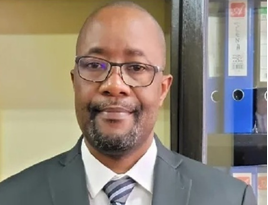AYV News, August 22, 2024
There is no way one can mention the remarkable achievements and expansion of digital connectivity to the creation of a more transparent and accountable telecommunications system to create lasting impact on the country, without mentioning the former Minister of Information and Communications, Mohamed Rahman Swaray.
His legacy is one of dedication, hard work, and a commitment to making Sierra Leone a better place for all its citizens. After properly diagnosing the problem facing SALCAB, he promptly called for its unbundling as it had proved to be not effective in managing the fiber optic cable.
Due to the ineffectiveness of SALCAB, there was urgent need to recapitalize and redirect this institution’s purpose which brought in Zoodlabs to take over the operations of the dysfunctional SALCAB and since then, Zoodlabs has consistently demonstrated over the years that it has the capacity, technical know-how, manpower and commitment to effectively managing Sierra Leone’s fiber cable network.
It is important to state that what informed the unbundling of the government fiber asset was the fact that, the government investment agenda into SALCAB was driven by simple and yet powerful aspiration to increase broadband penetration, create the enabling environment to develop a digitally inclusive society.
It is also a fact that the market for broadband services in the country before the unbundling remained stunted crippling the broad-based social and economic growth that informed government’s investment decisions.
It is unarguable that, since the formation of SALCAB, the business was operating at a mere break-even trend; sustaining minimum operating expenses, with zero re- capitalization/investment to strengthen the infrastructure, improve access, reliability and affordability.
Running a critical infrastructure like SALCAB with a flat liquidity ratio was a huge operational risk that has a lingering negative social and economic impact, and by implication a hindrance to achieving the government’s vision for a digital and smart Sierra Leone; the reason why government of Sierra Leone took the wise decision of unbundling SALCAB.
Investigations mounted by this press reveal that some of the critical challenges that informed government’s decision to unbundle SALCAB were: lack of clear regulatory guidelines of licensing framework for the management of SALCAB.
Since its inception, SALCAB has never been subject to licensing terms and conditions making it difficult to regulate its operations in the market; governance and fiduciary management weaknesses: Financial deficits to meet debt service flows for infrastructure loan.
Moreover, the Ministry of finance was still bearing 100% of the World Bank loan service payments for the loan financing to participate in the ACE Consortium.
It was also leant that for over three months, SALCAB could not generate enough cash to meet the financial requirements of the contract until the Finance Ministry provided the funds.
This press also discovered that SALCAB failed to take advantage of ACE opportunity to double Sierra Leone’s capacity from 88Gbps to nearly 200Gbps because they could not provide resources of about USD 800,000.
Additionally, SALCAB commercial liabilities included 49 billion (Old Leones) of which ACE was owed 3.28 billion. The revenue to Government was low with a total of USD $350,000 for over 8 years running of the infrastructure increasing the debt burden on Government.
Infrastructure capacity and utilization was low (total capacity of about 80G, with low utilization).
Research revealed that estimates of between 10 and 13 percent of the population have access to broadband internet even when the capacity then can conveniently support more than 70% access to internet. There was no investment plan to support international redundancy that could mitigate the SALCAB risk.
In other words, in an event of a cable cut; the service recovery period would be an average of 30 days, and during this period the entire country will be completely out of connectivity because the 250 KVA generator in use at the Cable Landing Station was a used machine loaned by a private ISP to SALCAB which was a serious challenge.
The Ministry of Information and Communications therefore proposed the following reforms in the Government of Sierra Leone Fibre optic cable assets:
Separate the international internet cable functions from local transmission backhaul operations (ACE Submarine Cable Landing Station); Establish new entity to operate and manage the backhaul terrestrial fibre assets; Introduce private sector capital and management principles in the ACE fibre optic as a means of achieving strategic objectives to easy financial burden on Government; Establish clear license terms and conditions for the operations of the submarine cable operator, being a monopoly operator in the market.
In order to bring about reform, as part of the contract, Government paid out about USD $1.8M. Increase in facility capacity was upped from 80Gb to about 500GB. Reduction in wholesale broadband price went up from about $40 to $10. As part of the group the roll out of fibre cable to about 80% of Freetown and environ increased the access to Fibre for last mile connection.
Part of the reforms included creating about 300 direct jobs and over 1,500 indirect jobs.
It is on record that the aforementioned reforms came after Zoodlabs advanced in the landing of a second cable through a consortium with market players and without Government borrowing or lending any money.

